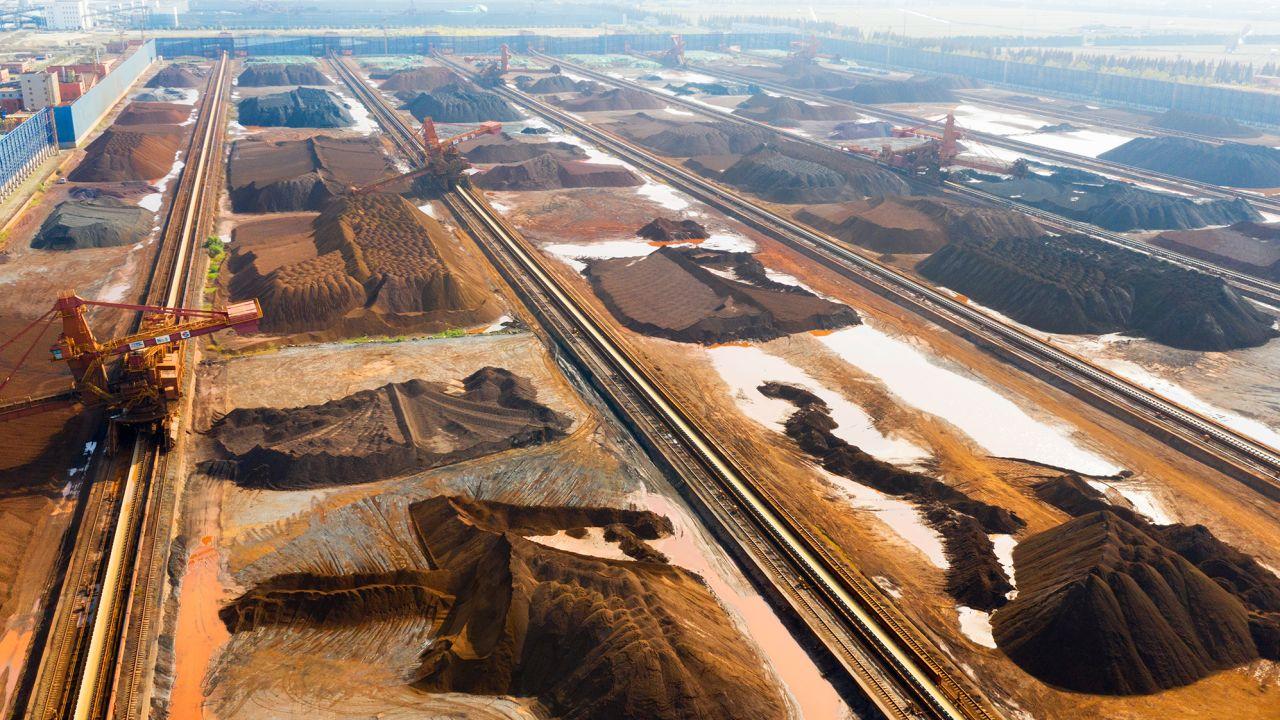Push and Pull: Australia’s Foreign Policy Dilemma in the Transition Phase of Re-Globalization
archive


Australian flag waves in front of the Great Hall of the People in Beijing, China, April 14, 2016. REUTERS/Jason Lee
Push and Pull: Australia’s Foreign Policy Dilemma in the Transition Phase of Re-Globalization
On June 27th 2019, Australia’s then Prime Minister Scott Morrison delivered his first major foreign policy address to the Asialink group at Bloomberg, following his surprise win in the May election of that year. The speech holds significant to this day as it not only highlights Australia’a persisting geostrategic tensions, but also exemplifies a gradual re-globalization process, with a specific focus on security and economic dimensions, defined and driven by“a new battle between democracies and non-democracies about the principles and values that shape the global order.” (Benedikter, 2020:73-84)
Benedikter and Kofler’s (2019) (re-)globalization reform agenda and the ‘5Rs’ blueprint of refining; reframing; reforming; redefining; and re-visioning provides a useful backdrop to discuss how a changing global order has complicated and obfuscated Australia’s security and economic reality. In this light, it is important to both recognize and ‘refine’ changing power dynamics between the US and China.
An Exemplary Speech
Morrison’s speech, Where We Live, (Morrison, 2019) was held just two days prior to the 2019 G20 Leaders’ Summit in Osaka, Japan. This Summit was the first meeting between the US and China since the deterioration of their relationship in the wake of the USA’s imposition of three major rounds of tariffs, totaling 250 Billion US$, on Chinese goods (BBC, 2018). Whilst former US president Trump had declared this to be a means to end the “unfair transfer of American technology and intellectual property to China,” (BBC, 2018) China referred to it as the "largest trade war in economic history" (ibid). Hence, Australia’s navigation of this major power conflict between its main economic partner and main security guarantor was a central point to the Where We Live speech. Further, as his first major foreign policy address since winning Office, Morrison used this opportunity to set the guiding principles for his Government’s engagement with Asia. Dismissing the idea of Australia’s geography as a burden, he emphasized the Indo-Pacific as the region that will continue to “shape our prosperity, security and destiny.” (Morrison, 2019)

Former Prime Minister Scott Morrison delivers an address in his first major foreign policy address of his new term at an Asialink/Bloomberg event in Sydney, June 2019. Image: Asialink.
Even in the absence of a discernible threat or obvious enemy, “demographic size, geographical expanse and cultural exceptionalism” have indeed significantly shaped Australia’s ‘self-help’ complex. (Baldino;Car;Langlois, 2014) However, it is important to acknowledge that consequent action in the face of this ‘security dilemma’ has largely occurred within the context of Australia’s alliance with the US. This approach was formalized as early as 1951 with the establishment of the ANZUS Treaty (ibid), and continues, as was clearly reflected in Morrison’s portrayal of the US as the “bedrock” to Australian security (Morisson, 2019). Further, Morrison asserted his intention to continue to deepen security cooperation with this great and powerful friend, the US and remain a “staunch and active ally” in a mutually beneficial alliance that has “never been stronger.” (ibid)
In the context of security, it is important to recognize that military capabilities and power are often dependent on economic development and capital accumulation. In this light, Australia’s budding engagement with East Asia, specifically with Japan and China, also needs to be considered. In his address, Morrison not only called Japanese Prime Minister Abe a “great friend,” (ibid) but also proceeded to describe the Australia-Japan relationship as special and “deeper than ever before.” (ibid). Similarly, he stressed the Liberal Government’s intention to further enhance Australia’s deep relationship with China, underpinned by “people-to-people ties.” (ibid) With this, Morrison appealed to the Asian diaspora in Australia who often have strong ties with Asia through “bicultural social and cultural capital.” (Ang, 2018)
Yet, it is hard to miss the primary emphasis Morrison placed on the economic importance of these two relationships, as China and Japan are Australia’s largest trading partners. However, Morrison emphasized that the Australia-China relationship is underpinned solely by national interest, not reciprocity, and through this, he clearly set a strategic boundary to this major trade relationship.1
Wrestling with a growing economic dependence on China and a strategic bearing shaped by trans-Pacific ties has been an ongoing foreign and defense policy challenge for Australia. Growing tensions between both the US and China have further complicated navigating this bifurcation of national interest in the course of the recent major disruptions of Covid-19 and Russia’s Ukraine war. Morrison’s speech clearly anticipated this as he lamented the widespread collateral damage and instability a continued break-down in the China-US relationship could cause in the Indo-Pacific region and beyond. Morrison critiqued the international system for its inadequacy in acknowledging “large emerging economies” and resolving contemporary challenges of “changing patterns of trade and new technologies.” (Morrison, 2019)2
Therefore, typical for Australia’s positioning in re-globalization, Morrison proceeded to call on both China and the US to resist “a narrow view of their interests,” (Morisson, 2019) yet his appeal to both nations differed. Whilst Morrison commended China’s rapid economic growth, he was also quick to emphasize that this success was primarily due to the “active and strategic engagement of the US and wider global community” and its accession to the World Trade Organization in 2001 (ibid). In this respect, Morrison portrayed settling trade tensions with the US as a way for China to ‘repay’ the wider global community for facilitating, and in part, enabling China’s transformation into an economic superpower. It is also important to highlight how Morrison stopped short of recognizing China as a developed nation, which then stood in sharp relief to his portrayal of the US as an experienced global hegemon that understands the responsibility of great power. It appears as though Morrison was appealing to the US through flattery, asking of it to “look beyond its own horizons,” (ibid) and settle trade tensions as part of its special responsibility to support the international system that it helped shape in the aftermath of World War II.

Iron ore imported from Australia and Brazil at an iron ore storage yard in Taicang Port, Jiangsu Province, China on December 9, 2020. Image: Getty Images
However, despite the worsening China-US trajectory, Morrison remained positive in his address, emphasizing Australia will not be “fazed, intimidated or fatalistic.” (ibid) He proceeded with a regional call to action, advocating for collaboration amongst neighboring states in the face of this new power-struggle dynamic, specifically addressing Australia’s “close partners,” (ibid) Japan, India, Indonesia and Vietnam. Morrison was also quick to assert that multilateral institutions, too, play a big part in Australia’s regional diplomacy. For middle-ranking states like Australia, these organizations often level the playing field and assist in navigating an increasingly anarchical international environment. Morrison specifically focussed on the special relationship Australia has with ASEAN, describing it as the “core” (ibid) to Australian interaction in the Indo-Pacific. He praised the organization particularly for advancing regional stability and facilitating intra-regional growth. With this, Morrison believed a multi-dimensional policy approach best serves Australia’s national interests when seeking to define a way forward in the context of the US-China conflict.
Morrison eventually outlined his intention for labour marketing programs, undersea cable projects and the Australian Infrastructure Financing Facility to be established in Australia’s own sphere of influence, the Pacific. These soft-power initiatives are to pave the way for a re-orientation of the Pacific to be front and centre in Australia’s strategic outlook, foreign policy and personal connections; something Morrison coined the “Pacific step-up.” (ibid). This is to be an important step forward for Australia the ensure a stable, strong and secure region as a member of the Pacific ‘family’, a word Morrison proceeded to translate to Maori, Samoan and Malay as a direct appeal to the Pacific populace. This served as another case in point to demonstrate Morrison’s intention to redefine Australia as a middle power, willing to assert itself in regional institutions and relationships, something previously paid insufficient attention to in the development of Australia’s foreign policy.
Changes in Foreign Policy
However, it is important to note that Australia’s foreign policy has since evolved in light of the Covid-19 pandemic. Australia joining the US in calls for an independent international inquiry into the origins of Covid-19 in April of 2020 and the nation’s vocal criticism of China’s actions in “Hong Kong, Xinjiang, Taiwan and the South China Sea” have seen China curb Australian imports and introduce major tariffs. (Choudhury, 2019) Moreover, Australia’s involvement in Quad, an informal grouping described by Beijing as a “US-led attempt to create an Asian version of NATO,” (Aljazeera, 2020) has placed further strain on this relationship. Hence, it appears that Australia’s ‘self-help’ alliance with the US has taken precedence over economic engagement with China, which could mean a shift away from Australia’s traditional ‘hedging’ diplomacy (Chan, 2020:87-112). It also remains to be seen if Australia, in the face of China’s assertiveness, can indeed assume regional leadership and develop a “regional security architecture.” (Walker, 2019) Yet, even Australia’s alliance with the US has changed, primarily during Trump’s presidency, (2017-2021) as Morrison refused to follow the US’ lead in leaving the Paris Agreement and defunding the World Health Organization (Kassam, 2020). Arguably, these developments have further presented an opportunity for a re-orientation away from the Australia-US-China triangle towards more regional counterparts. During Covid-19, the Australian Government demonstrated a continuation of and new dimension to the Pacific step-up initiative through its vaccine diplomacy, especially in Papua New Guinea. (The Australian, 2021)
Conclusion
The Australian case in point suggests that re-globalization, a process influenced by geostrategic tensions between China and the US, may contribute to a restructuring of the global architecture towards a more regionalized, multipolar reality. The country’s dilemma calls for a more serious discourse on the potential ‘reframing’ of international trade and security cooperation with a specific focus on regional embeddedness and re-integration of economic and security needs.
1. This self-interest also underpinned Morrison’s predecessor, Malcolm Turnbull’s, decision to blacklist Chinese 5G networks Huawei and ZTE. Although this decision had major implications for the Australia-China bilateral relationship, it was strategically omitted from Morrison’s address.
2. Later, Morrison drew a parallel between these shortcomings and the failure of pre-World War II institutions, arguably suggesting that inaction in the face of growing tensions may lead to similar repercussions. This thought reflects a belief that peace in the international system can only be upheld if there is a balance between the most powerful states (Baladino, Carr, Langlois, 2014). This balance of power, Morrison suggested, can only be sustained in a “global order based on agreed rules [not] the exercise of power alone” (Morrison, 2019).
Benedikter, R. (2020) What is Re-Globalisation? New Global Studies, vol. 15, no. 1, 2021, pp. 73-84. https://doi.org/10.1515/ngs-2020-0051
Morrison, S. (2019, June 27). Where We Live. Asialink.
https://asialink.unimelb.edu.au/stories/australia-and-the-indo-pacific-an-address-by-prime-minister-scott-morrison
BBC (2018, September 24). China accuses US of trade bullying as new tariffs imposed.
https://www.bbc.com/news/business-45622075
Baldino, D., Carr, A., Langlois, A. J. (Eds.). (2014). Australian foreign policy: controversies and debates. Oxford University Press.
Ang, I. (2018, March 7). Engaging Australia’s Chinese diaspora. EastAsiaForum. https://www.eastasiaforum.org/2018/03/07/engaging-australias-chinese-diaspora/?fbclid=IwAR2lo9qMIT3cvoJW5YLSBFlBd3ZjQvDrFmgDFs8IVhjNRgo5cCV5dhYBk-A
Choudhury, S. H. (2019, March 28). Former Australian PM Turnbull explains why his government banned Huawei, ZTE from selling 5G equipment. CNBC.
https://www.cnbc.com/2019/03/28/malcolm-turnbull-on-australias-decision-to-ban-chinas-huawei-and-zte.html
Aljazeera. (2020, December 1). China-Australia tension explained in 500 words. https://www.aljazeera.com/economy/2020/12/1/australia-china-tensions-explained-in-500-words
Chan, L. (2020). Strategic Hedging: A “third way” for Australian foreign policy in the Indo-Pacific. Asia Policy, 15(3), 87–112.
https://search-proquest-com.ezproxy.library.uwa.edu.au/docview/2434043777?pq-origsite=primo&accountid=14681
Walker, T. (2019, July 4). Australian Leadership in Regional Institutions: Scott Morrison’s Foreign Policy Speech. Australian Institute of International Affairs. https://www.internationalaffairs.org.au/australianoutlook/australian-leadership-in-regional-institutions-scott-morrisons-foreign-policy-speech/
Kassam, N. (2020, July 20). Great Expectations: The unravelling of the Australia-China relationship. Brookings. https://www.brookings.edu/articles/great-expectations-the-unraveling-of-the-australia-china-relationship/
The Australian. (2021, March 17). Vaccine diplomacy key to the region.
https://www.theaustralian.com.au/subscribe/news/1/sourceCode=TAWEB_WRE170_a&dest=https%3A%2F%2Fwww.theaustralian.com.au%2Fcommentary%2Feditorials%2Fvaccine-diplomacy-key-to-region%2Fnewsstory%2Fb53620c8109791503b616105bd62f107&memtype=anonymous&mode=premium
Benedikter, R., and Kofler, I. (2019. “Globalization’s Current Transition Phase: The 5R’s.” Global-e, 12 (36). https://www.21global.ucsb.edu/global-e/august-2019/globalization-s-current-transition-phase-5-r-s




